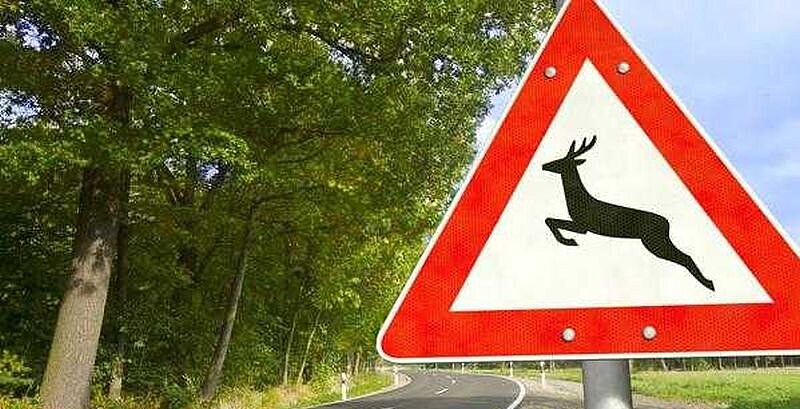
| Project leader: | Prof. Prof. h. c. Dr. Ursula Siebert |
|---|---|
| Scientific staff: | Camilla-Bernadette Tusché, M.Sc. |
| Project term: | Mid of 2021 until September 2023 |
| Sponsorship: | Bundesministerium für Wirtschaft und Energie |
Project description
Where humans and wild animals share their habitat conflicts may occur. This can manifest itself in wildlife-vehicle collisions (WVC) but also in depredation to agricultural and forestry crops. Although fencing off vulnerable areas is considered effective, it disrupts wildlife habitats and migration routes and, last but not least, represents a high financial cost. Optical and acoustic methods (reflectors, played warning sounds, etc.) are also frequently used to deter wildlife. However, according to the latest scientific findings, their effect must be viewed critically and often does not lead to the desired result. So-called scaring agents are another way to keep animals away from roads and plantations. This can be achieved by using certain scents - the market for these is large and confusing. Sufficient scientific research into their effectiveness has not yet been undertaken.
The project "H - T - WI - WildLenkSys/scaring agent based on combined scents" tests over-the-counter agents for their effectiveness on enclosed game (roe deer, wild boar, red deer) as well as on free-ranging animals. The selected study species are those that are most frequently affected in traffic accidents and can cause damage in forestry/agriculture.
In this joint project, which is funded by the ZiM programme (Zukunft im Mittelstand) of the Federal Ministry for Economic Affairs and Energy, medium-sized companies and scientific institutions are working on innovative ideas. The project partners are occupied on the design for a new type of game guidance system based on combined scents, which is to be used, for example, along roads to reduce accidents involving game. This involves the application of paper rings saturated with scents, which are biodegradable and harmless to wildlife. If this is effective, the animals will be more vigilant and avoid "scented" danger spots or cross them with increased caution.
The idea of a wildlife guidance system is to be tested for its feasibility in four task areas. The role of ITAW Hannover in this project is to provide scientific support and to work on task areas 1 and 4.
1.Determination of suitable scent substances to scare off animals
->Enclosure trials in German wildlife parks
2.Development of the machine incl. control programming
3.Development of the scent carrier
4.Performance review
->Trials in the field (accident blackspots, forest plantations)


